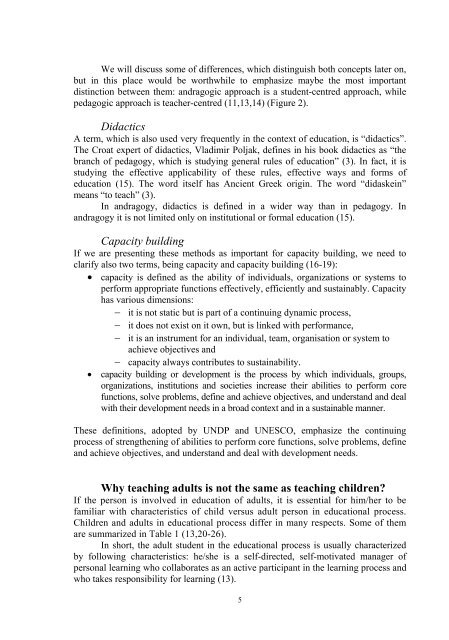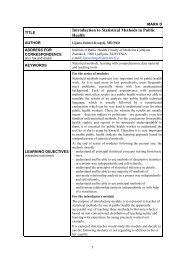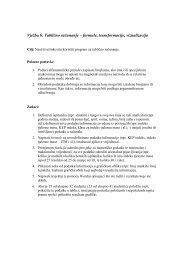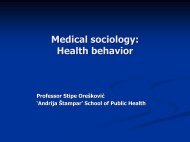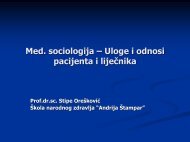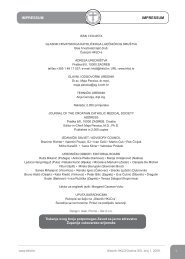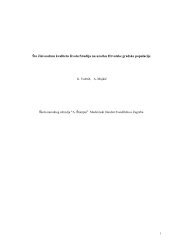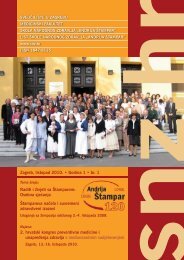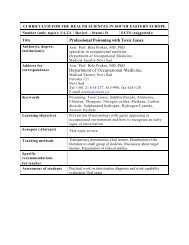STATISTINE METODE V EPIDEMIOLOGIJI
STATISTINE METODE V EPIDEMIOLOGIJI
STATISTINE METODE V EPIDEMIOLOGIJI
You also want an ePaper? Increase the reach of your titles
YUMPU automatically turns print PDFs into web optimized ePapers that Google loves.
We will discuss some of differences, which distinguish both concepts later on,<br />
but in this place would be worthwhile to emphasize maybe the most important<br />
distinction between them: andragogic approach is a student-centred approach, while<br />
pedagogic approach is teacher-centred (11,13,14) (Figure 2).<br />
Didactics<br />
A term, which is also used very frequently in the context of education, is “didactics”.<br />
The Croat expert of didactics, Vladimir Poljak, defines in his book didactics as “the<br />
branch of pedagogy, which is studying general rules of education” (3). In fact, it is<br />
studying the effective applicability of these rules, effective ways and forms of<br />
education (15). The word itself has Ancient Greek origin. The word “didaskein”<br />
means “to teach” (3).<br />
In andragogy, didactics is defined in a wider way than in pedagogy. In<br />
andragogy it is not limited only on institutional or formal education (15).<br />
Capacity building<br />
If we are presenting these methods as important for capacity building, we need to<br />
clarify also two terms, being capacity and capacity building (16-19):<br />
• capacity is defined as the ability of individuals, organizations or systems to<br />
perform appropriate functions effectively, efficiently and sustainably. Capacity<br />
has various dimensions:<br />
− it is not static but is part of a continuing dynamic process,<br />
− it does not exist on it own, but is linked with performance,<br />
− it is an instrument for an individual, team, organisation or system to<br />
achieve objectives and<br />
− capacity always contributes to sustainability.<br />
• capacity building or development is the process by which individuals, groups,<br />
organizations, institutions and societies increase their abilities to perform core<br />
functions, solve problems, define and achieve objectives, and understand and deal<br />
with their development needs in a broad context and in a sustainable manner.<br />
These definitions, adopted by UNDP and UNESCO, emphasize the continuing<br />
process of strengthening of abilities to perform core functions, solve problems, define<br />
and achieve objectives, and understand and deal with development needs.<br />
Why teaching adults is not the same as teaching children<br />
If the person is involved in education of adults, it is essential for him/her to be<br />
familiar with characteristics of child versus adult person in educational process.<br />
Children and adults in educational process differ in many respects. Some of them<br />
are summarized in Table 1 (13,20-26).<br />
In short, the adult student in the educational process is usually characterized<br />
by following characteristics: he/she is a self-directed, self-motivated manager of<br />
personal learning who collaborates as an active participant in the learning process and<br />
who takes responsibility for learning (13).<br />
5


